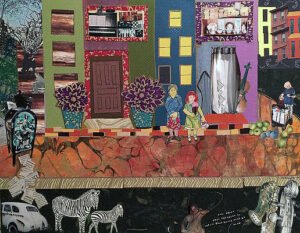
Collage artist Ann Calandro drew a lot as a child and wanted to be an artist when she was grown. Not getting into art school, she ended up as an English major who liked to read. She studied with poet Donald Finkel at Washington University in St Louis.
“A lot of my inspiration comes from my parents, who were interested in music, art, literature, and architecture, and just from growing up in New York City, where there is always lots to look at and lots of motion,” she says. “My father was a city planner, so he was always talking about buildings and bridges. Other sources of inspiration are children’s books and fairy tales, music and music lyrics, and the work of other artists, writers, and musicians.”
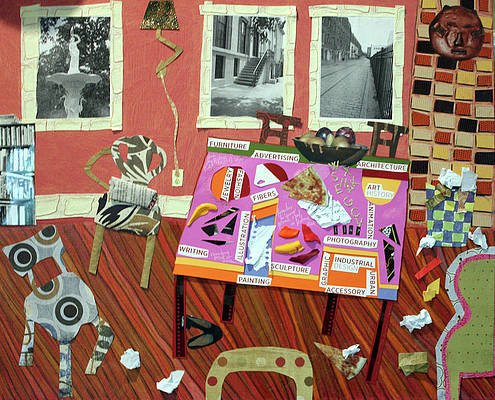
Particular artists who influence Calandro’s work are Della Wells, a collage artist in Milwaukee, Brian Kershisnik, an oil painter in Utah, and Eric Fischl, an oil painter on Long Island. “They all tell a story in their artwork, and I like their use of color. Wells and Kershisnik also incorporate a magical quality in their work,” she says.
Calandro further admires the work of oil painters Mel Leipzig and Paul Matthews as well as non-contemporary artists Romare Bearden, Jacob Lawrence, Moses and Raphael Soyer, Henri Matisse, and children’s book illustrators Ezra Jack Keats and Leo Lionni. “Although I tend to like figurative art more than abstract art, I admit to a fondness for certain works by Morris Louis and Helen Frankenthaler because of the color. And I love black and white photography, especially the photographs of Andre Kertesz.”
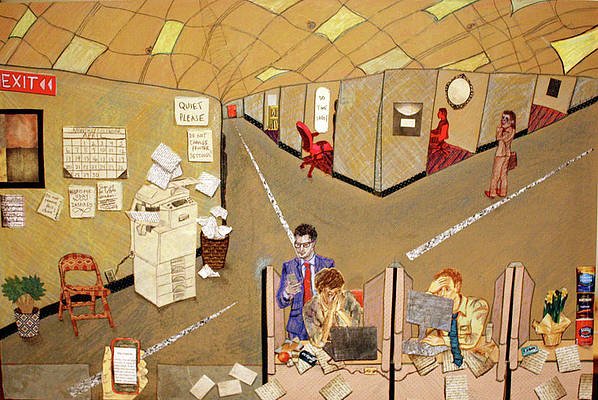
Calandro began making collages in 2004 or 2005 when she worked at a pharmaceutical ad agency as a writer and editor. “I wanted to do something to unwind after work that didn’t involve reading or writing. I decided to try collage and to make bookmarks on card stock with various papers, stickers, and cut-up parts of photographs that I take.“
She started small with the bookmarks and progressed to notecards, which she gave to friends and relatives and later sold at local craft fairs. Then Calandro made larger collages and entered them into juried art shows, exhibits and publications.

Calandro uses mat board as her base, because, she explains, it’s stronger, doesn’t buckle and can accept some water if using water-soluble pastels. “I like a darker mat board with some texture,” she says, “because I find that it combines in interesting ways with colored pencils.”
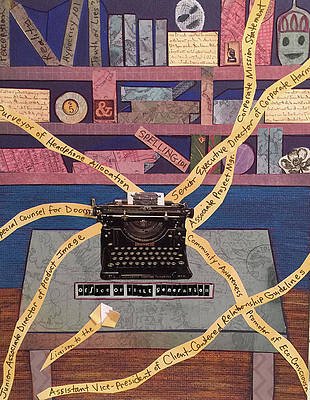
For her collages, Calandro uses a combination of wrapping papers, card stock papers, and art papers. Sometimes she cuts out parts of old magazines or wallpaper samples. She also uses her photographs taken in urban settings, markers, glitter pencils, graphite pencils, colored pencils, dabs of acrylic paint, and sometimes chalk and fabric and stickers. She applies various types of adhesive to glue everything down. “It’s all been a process of trial and error,” she says.
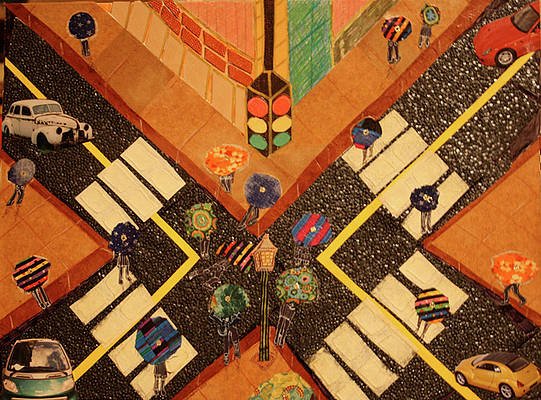
“I like urban settings where the perspective is interesting—being high up in a building and looking down at the street, crosswalks or unusual shadows. While I’ve made a number of city collages, I also like to make ones of interiors and landscapes.”
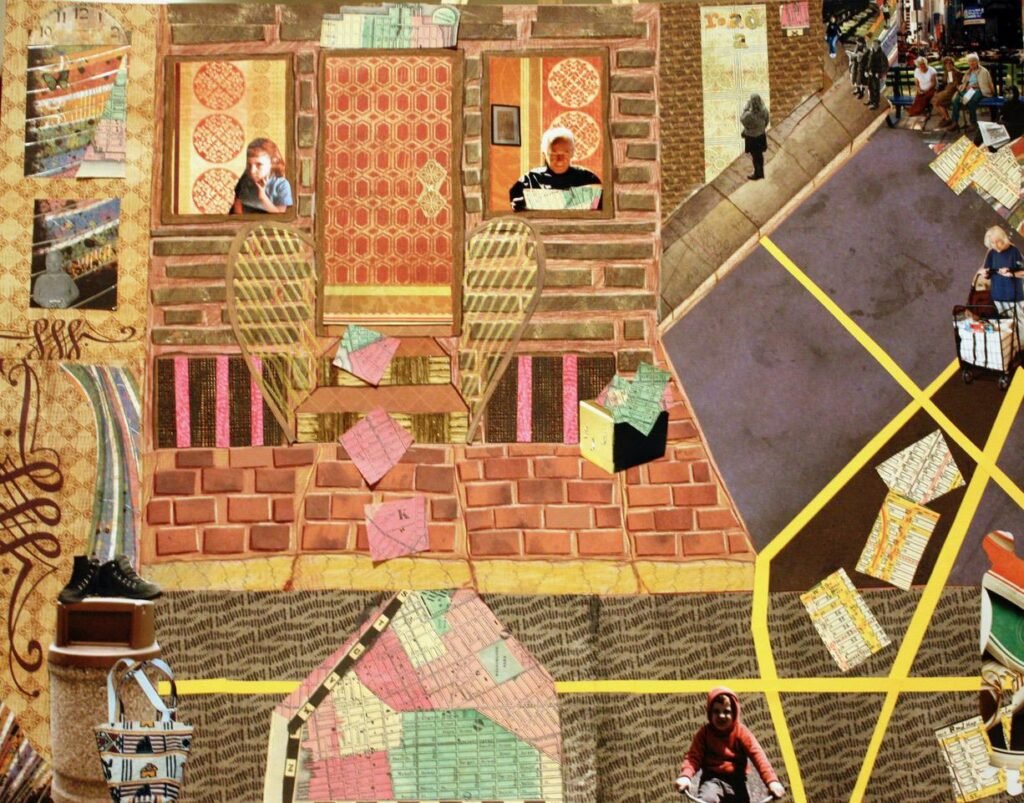
Her themes include memory, childhood, the gulf between life and death, fables and fairy tales, humor, music, dreams, imagination.
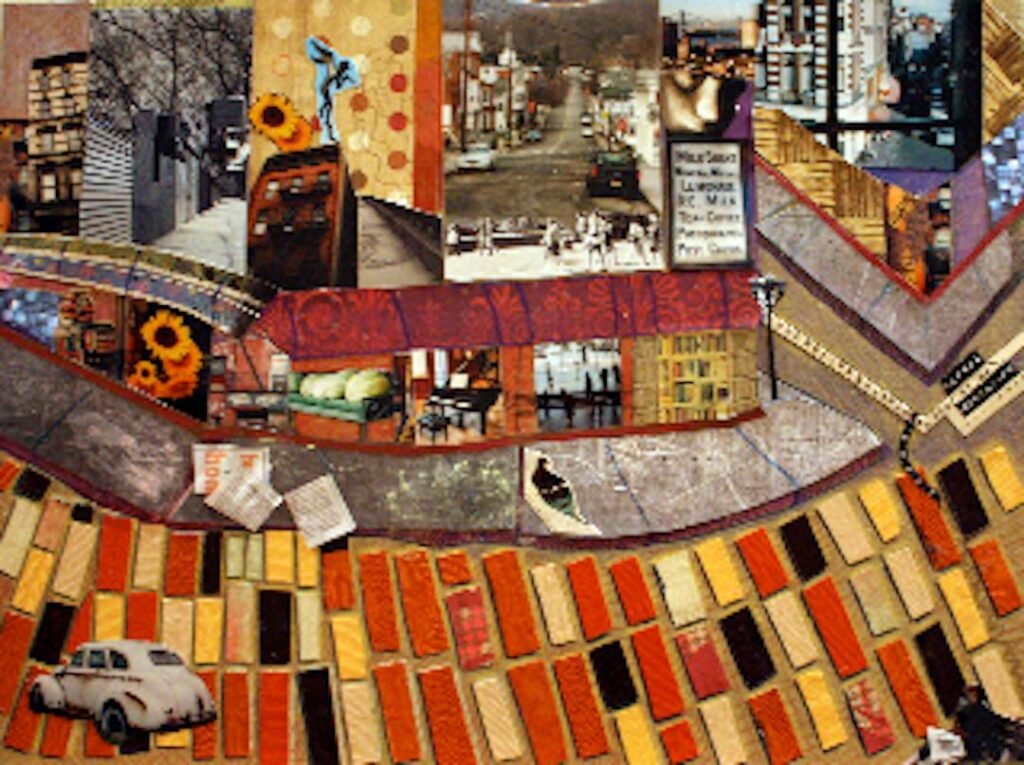
“Often I’ll get an idea for a collage from a random sentence,” she says. “The title for Invocation, for example, came from a computer error message that was something like ‘Exception Has Been Thrown By the Target of Your Invocation.’ I have no idea what that actually means, but it gave me a title.
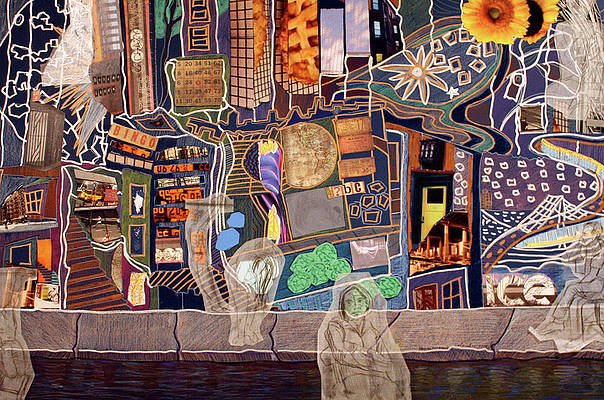
“‘Desire Lines’ is a term in architecture and urban planning that refers to people creating their own paths across lawns and quadrangles instead of, or in addition to, following the formal paths. I thought it made an interesting collage subject and title.”
Calandro recently bought art paper of different metal and wood textures and is using it to make buildings that evoke the sun’s setting. “I’ve also been intrigued by a line in a mystery novel that mentioned that the ancient Greeks believed that there were two types of dreams, entered into through two different gates. One gate was made of ivory (false dreams), and the other was made of horn (true dreams). I thought I’d try to make a collage that somehow incorporates the idea of two different gates or doors and two different kinds of dreams.”

Share this post with your friends.

